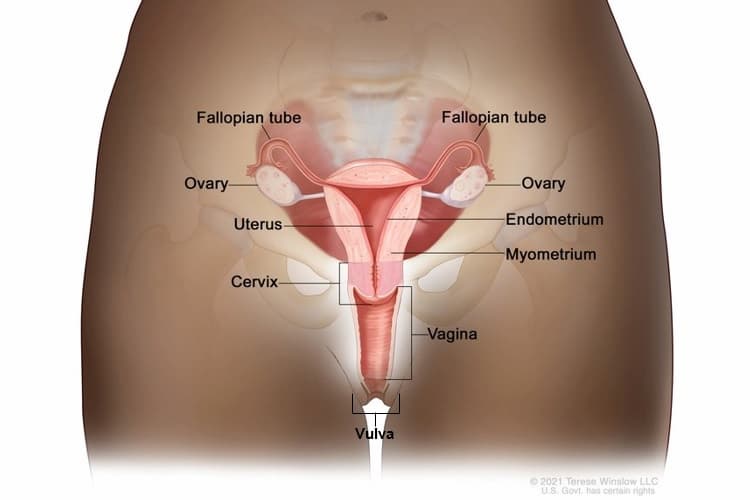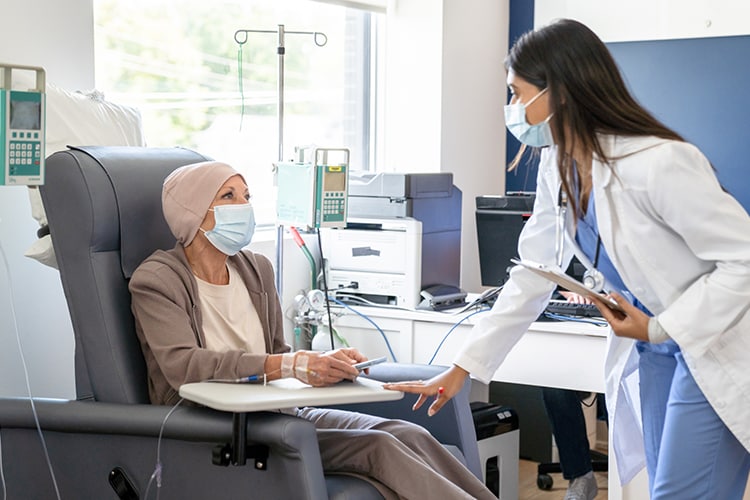Basic Information About Uterine Cancer

This diagram shows different parts of a woman’s reproductive system.
© 2021 Terese Winslow LLC. U.S. Govt. has certain rights. Used with permission. Contact artist at www.teresewinslow.com for licensing.
Cancer is a disease in which cells in the body grow out of control. Cancer is usually named for the part of the body where it starts, even if it spreads to other body parts later. When cancer starts in the uterus, it is called uterine cancer. The uterus is the pear-shaped organ in a woman’s pelvis (between your hip bones). The uterus, also called the womb, is where the baby grows when a woman is pregnant. The most common type of uterine cancer is also called endometrial cancer because it forms in the lining of your uterus, called the endometrium.
All women are at risk for uterine cancer as long as they have a uterus, and the risk increases with age. Most uterine cancers are found in women who are going through or who have gone through menopause—the time of life when your menstrual periods stop.
Several factors may increase the chance that you will get uterine cancer.
There is no known way to prevent uterine cancer, but some things may lower your chance of getting it.
Uterine cancer may cause vaginal discharge or bleeding that is not normal for you. Uterine cancer may also cause other symptoms, such as pain or pressure in your pelvis.
Since there is no simple and reliable way to screen for uterine cancer, it is especially important to recognize warning signs and learn what you can do to lower your risk.
Uterine cancer is treated in several ways. It depends on the kind of uterine cancer and how far it has spread. Treatments include surgery, chemotherapy, and/or radiation.




